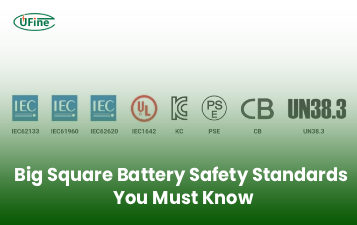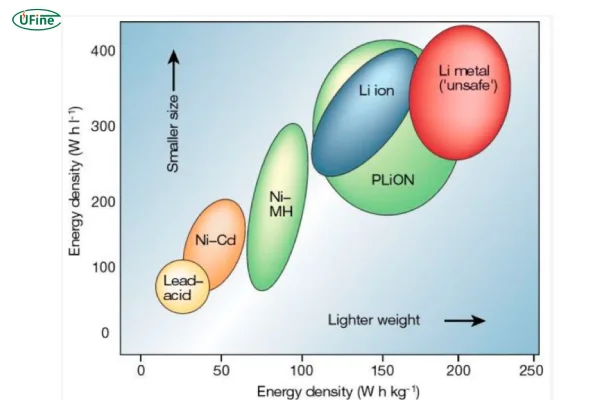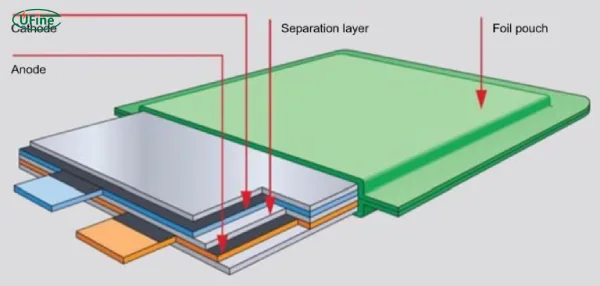
- Part 1. Learn lithium battery chemistry
- Part 2. How lithium batteries work
- Part 3. Factors influencing lithium battery chemistry
- Part 4. Overview of common lithium battery chemistries
- Part 5. 6 Basic lithium battery chemistries most suitable for LiPo batteries
- Part 6. Comparison of voltage, energy density, and applications
- Part 7. Choosing the right lithium ion chemistry for your application
- Part 8. Safety and stability of different lithium chemistries
- Part 9. Trends in lithium ion chemistry development
- Part 10. Conclusion
- Part 11. FAQs
In the rapidly evolving world of energy storage, lithium ion battery chemistry plays a defining role in shaping the performance, lifespan, and safety of batteries across industries. From smartphones and drones to electric vehicles (EVs) and energy storage systems, lithium-ion batteries are everywhere—but not all of them are created equal.
This article dives deep into the science behind lithium-ion battery chemistries, exploring how they work, the six most commonly used types for LiPo batteries, and how to choose the right chemistry for your application. We’ll also compare their voltage, energy density, and applications to help you make informed decisions.
Part 1. Learn lithium battery chemistry
Lithium-ion battery chemistry refers to the chemical composition of materials used in a battery’s cathode and anode. This chemistry determines critical characteristics such as:
- Voltage
- Energy density
- Power output
- Safety
- Cost
- Lifespan
The reason lithium-ion technology has taken the lead in modern energy storage is its high energy-to-weight ratio, low self-discharge, and excellent cycle life. But the diversity within lithium-ion chemistries means each formulation has strengths and trade-offs suited to different applications.
Part 2. How lithium batteries work
At the core of every lithium-ion battery are four essential components:
- Cathode: Determines the battery’s voltage and capacity (varies with chemistry).
- Anode: Typically made of graphite, it stores lithium ions during charging.
- Electrolyte: A lithium salt in a solvent that enables ion flow between electrodes.
- Separator: Prevents short circuits while allowing ion flow.
During discharge, lithium ions flow from the anode to the cathode, releasing energy. During charging, the ions move in the opposite direction. The performance of this cycle is largely defined by the materials chosen—hence the significance of battery chemistry.
Part 3. Factors influencing lithium battery chemistry
Choosing the right battery chemistry involves balancing several performance factors:
- Energy Density (Wh/kg): Determines how much energy a battery can store for its weight.
- Cycle Life: The number of full charge/discharge cycles a battery can endure before losing capacity.
- Cost per kWh: Impacts the total cost of devices or systems using the battery.
- Thermal Stability: Determines safety under high-load or high-temperature conditions.
- Power Output: The rate at which energy can be delivered.
- Environmental Impact: Includes sourcing, recyclability, and chemical toxicity.
Each lithium-ion battery chemistry ranks differently on these metrics, which makes understanding them essential for engineers, manufacturers, and end users.
Part 4. Overview of common lithium battery chemistries
Lithium-ion batteries come in various chemistries, each with a unique composition of metal oxides and carbon materials. Some are better suited for consumer electronics, while others excel in EVs, drones, or grid storage.
Li-ion and LiPo (Lithium Polymer) batteries are the two dominant structural formats:
- Li-ion batteries use liquid electrolytes and rigid cases.
- LiPo batteries use gel or solid electrolytes and flexible packaging, offering lighter weight and custom shapes.
Most lithium-polymer batteries use the same base chemistries as traditional lithium-ion cells but with modified packaging and electrolyte forms.
Part 5. 6 Basic lithium battery chemistries most suitable for LiPo batteries
The six primary lithium-ion chemistries commonly adapted for LiPo (lithium polymer) battery formats include:
1. Lithium Cobalt Oxide (LCO) – LiCoO₂
- Energy Density: High
- Cycle Life: Moderate (500–1,000 cycles)
- Pros: Compact size, high energy storage
- Cons: Expensive, prone to overheating
- Common Use: Smartphones, laptops, tablets
2. Lithium Manganese Oxide (LMO) – LiMn₂O₄
- Energy Density: Moderate
- Cycle Life: Moderate
- Pros: Good thermal stability, safe
- Cons: Lower longevity under heavy load
- Common Use: Power tools, e-bikes, medical devices
3. Lithium Iron Phosphate (LFP) – LiFePO₄
- Energy Density: Lower than LCO/NMC
- Cycle Life: Excellent (2,000–5,000+ cycles)
- Pros: Extremely safe, long life, thermally stable
- Cons: Bulkier due to lower energy density
- Common Use: Solar systems, EVs, UPS, LiPo packs for robotics
4. Lithium Nickel Manganese Cobalt Oxide (NMC) – LiNiMnCoO₂
- Energy Density: High
- Cycle Life: Good
- Pros: Balanced performance, cost-effective
- Cons: Requires careful management
- Common Use: EVs, e-bikes, power tools
5. Lithium Nickel Cobalt Aluminum Oxide (NCA) – LiNiCoAlO₂
- Energy Density: Very high
- Cycle Life: Good
- Pros: Long-lasting, high performance
- Cons: Expensive, thermal concerns
- Common Use: High-end EVs (e.g., Tesla), industrial LiPo packs
6. Lithium Titanate (LTO) – Li₄Ti₅O₁₂
- Energy Density: Low
- Cycle Life: Exceptional (10,000+ cycles)
- Pros: Ultra-fast charging, extreme lifespan, safe
- Cons: Low voltage, heavier
- Common Use: Grid storage, military-grade drones, UPS
These six chemistries can all be built into LiPo form factors for custom applications requiring shape flexibility, higher power output, or weight-sensitive designs.
Part 6. Comparison of voltage, energy density, and applications
Let’s compare these six lithium-ion chemistries side-by-side:
| Chemistry | Nominal Voltage | Energy Density (Wh/kg) | Cycle Life | Typical Applications |
|---|---|---|---|---|
| Lithium Cobalt Oxide (LCO) | 3.6–3.7V | 150–200 | 500–1,000 | Smartphones, Laptops, Cameras |
| Lithium Manganese Oxide (LMO) | 3.7–4.2V | 100–150 | 500–1,000 | Power Tools, Medical Devices |
| Lithium Iron Phosphate (LFP) | 3.2–3.3V | 90–140 | 2,000–5,000+ | Solar Storage, EVs, UPS, Robotics |
| Lithium Nickel Manganese Cobalt Oxide (NMC) | 3.6–3.7V | 150–220 | 1,000–2,000 | EVs, Drones, Power Tools |
| Lithium Nickel Cobalt Aluminum Oxide (NCA) | 3.6–3.7V | 200–260 | 1,000–2,000 | High-End EVs, Aerospace |
| Lithium Titanate (LTO) | 2.3–2.4V | 70–90 | 5,000–10,000+ | Grid Storage, Military, Extreme Environments |
Insights:
- LCO and NCA offer high energy for compact devices.
- LFP and LTO excel in safety and longevity.
- NMC is the best all-rounder for many LiPo-based industrial designs.
Part 7. Choosing the right lithium ion chemistry for your application
The ideal lithium-ion chemistry depends on your specific priorities:
GoalBest ChemistryLong lifespanLFP, LTOHigh energy densityNCA, LCOFast chargingLTO, NMCLow costLFP, NMCHigh power outputLMO, NMCSafe performanceLFP, LTO
Examples:
- Drones may use high-voltage NMC or LCO LiPo batteries.
- Solar energy storage may prefer LFP in LiPo format for long life and low thermal risk.
- High-performance robotics might rely on NCA or even LTO for burst power and cycle count.
Part 8. Safety and stability of different lithium chemistries
Safety is a critical concern in battery design. Some chemistries are more prone to thermal runaway and combustion than others:
- LFP and LTO are the safest, thanks to their thermal and chemical stability.
- LCO and NCA require strict BMS control due to thermal sensitivity.
- NMC and LMO offer good compromise with appropriate management systems.
Best Practices for Safety:
- Use certified Battery Management Systems (BMS)
- Avoid overcharging or deep discharging
- Choose the right chemistry for thermal conditions
Part 9. Trends in lithium ion chemistry development
The world of lithium-ion battery chemistry is rapidly evolving, driven by the demand for safer, cheaper, and more powerful batteries:
- Solid-State Batteries: Promise greater energy density and fire resistance
- Cobalt-Free Chemistries: Like LNMO are gaining attention for ethical and cost reasons
- High-Silicon Anodes: Under development to improve energy density
- Hybrid Chemistries: Combining traits (e.g., NMC with lithium-sulfur or graphene)
These innovations could eventually enhance or replace today’s six primary chemistries, but for now, those remain the foundation for most LiPo and lithium-ion batteries.
Part 10. Conclusion
The choice of lithium ion battery chemistry is more than a technical decision—it directly affects how your device or system performs, how long it lasts, and how safe it is. From high-energy LCO cells in phones to ultra-durable LFP packs in solar systems and LTO batteries for extreme environments, the right chemistry unlocks the full potential of your technology.
If you’re designing or sourcing a battery-powered system, selecting the right lithium-ion chemistry—especially in LiPo format—can make the difference between success and failure. Always consult experienced suppliers or battery engineers when customizing battery packs for industrial or high-performance applications.
Part 11. FAQs
What’s the best lithium ion chemistry for electric vehicles?
NMC and NCA are widely used for EVs due to their high energy density and good cycle life.
Which lithium battery chemistry is the safest?
LFP and LTO are the safest, with stable thermal behavior and minimal fire risk.
Can I replace an LCO battery with LFP in the same device?
Not usually. Chemistries differ in voltage and performance; replacements must match system specs.
Which chemistry charges the fastest?
LTO can fully charge in as little as 10 minutes, thanks to low internal resistance.
Are LiPo batteries more dangerous than Li-ion?
LiPo batteries can be more volatile due to packaging, but safety depends more on chemistry and BMS design.
Related Tags:
More Articles

Big Square Battery Safety Standards You Must Know
Learn key safety standards for big square batteries to avoid fire risks, shipping delays, and compliance issues in EV, industrial, and energy storage projects.
Big Square Battery Applications in Solar & Industrial Equipment
Big square batteries deliver high capacity, stable output, and long life for solar, industrial, and backup power. Explore key uses and advantages.
Big Square Battery vs Cylindrical Battery: Complete 2025 Guide for EVs, ESS & Industrial Devices
Choosing the right battery is key for designers and engineers. Compare big square vs cylindrical batteries to find the best fit for your application.
How to Choose the Right Big Square Battery for Your Device?
If you’re choosing a big square battery for EVs, solar, or mobility devices, this guide helps you pick the right solution for real-world needs.
Big Square Battery Complete Guide: Types, Uses & Buying Tips
If you are choosing a big square lithium battery for EVs, solar, RVs, or AGVs, this guide helps you select the right NMC, LFP, or LTO solution with examples.




